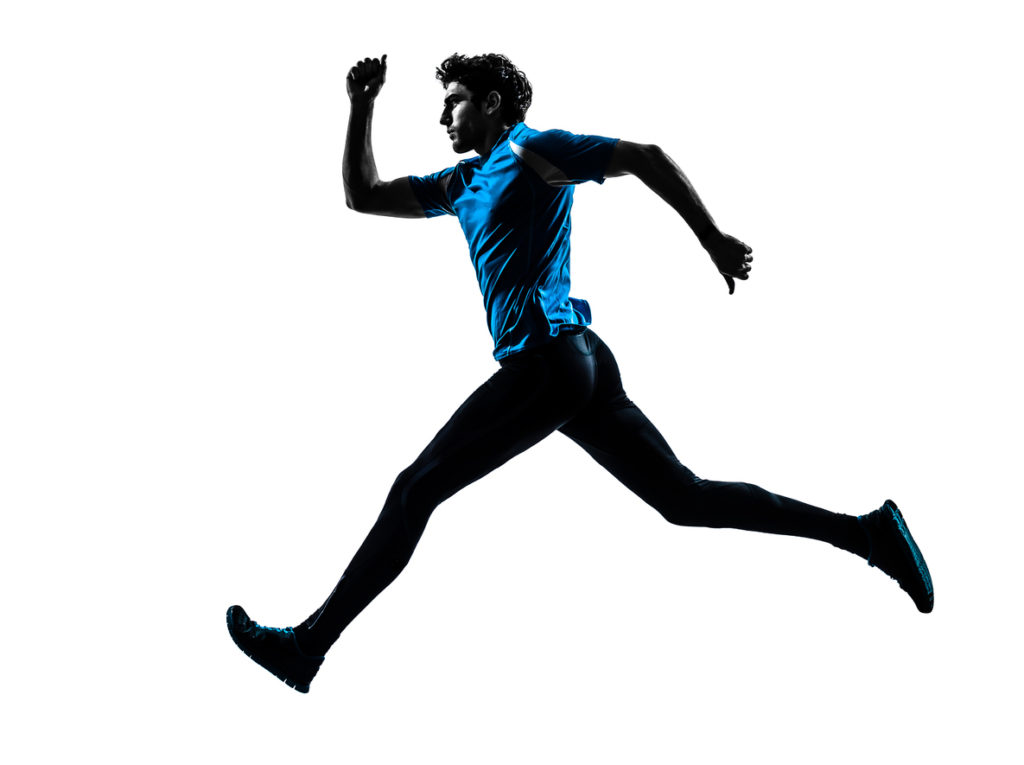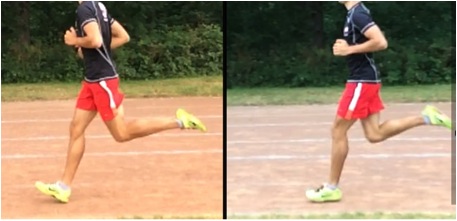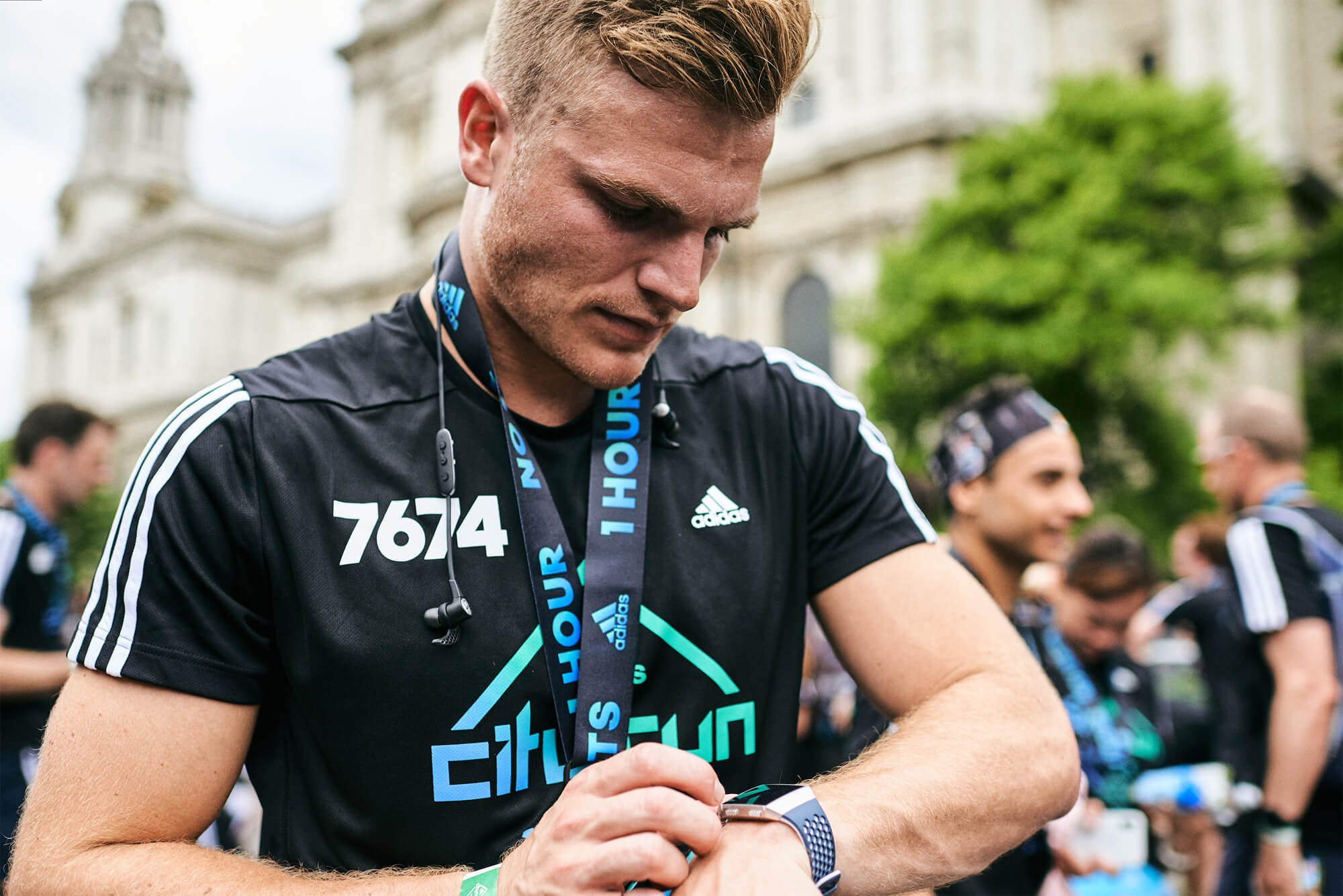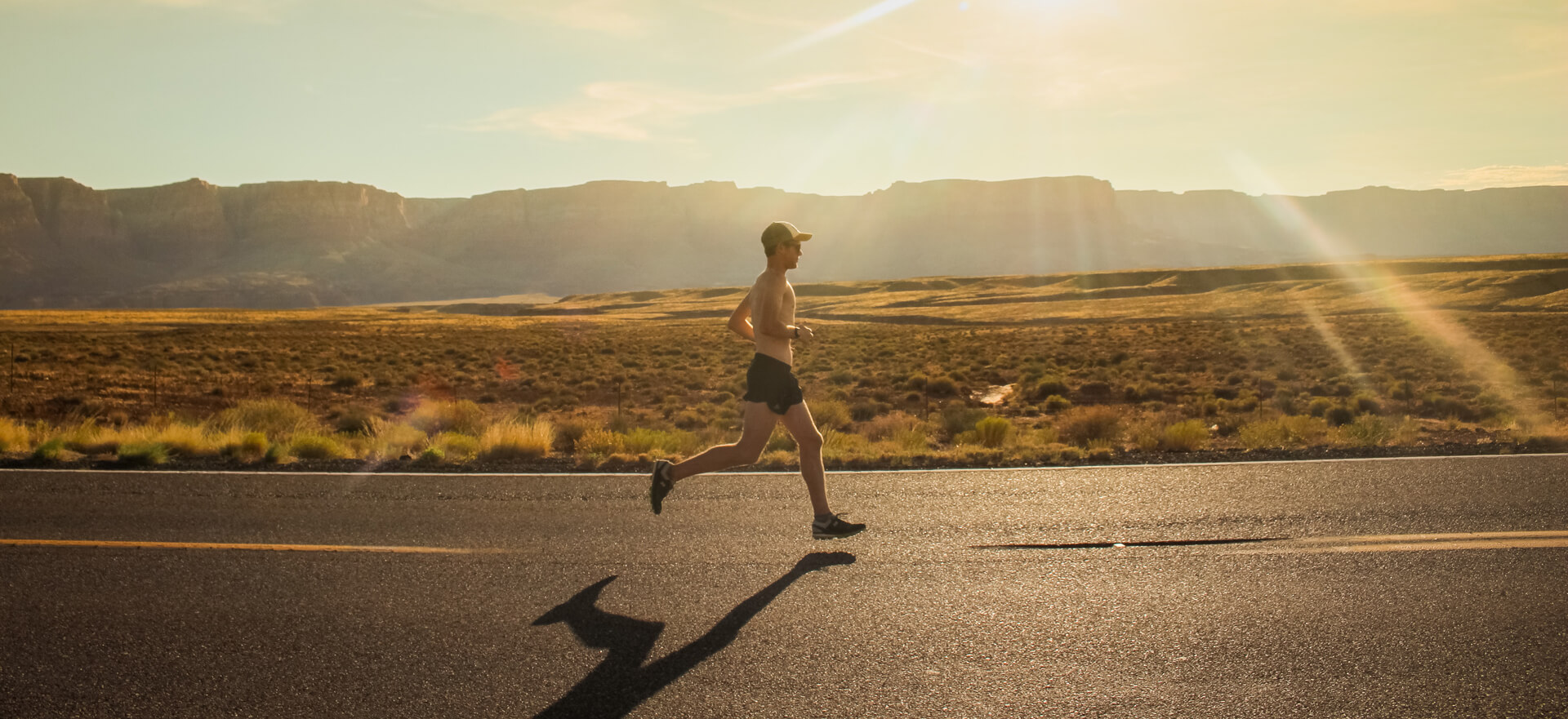 Forefoot, Midfoot, Heel? The debate rumbles on as to where on your foot you should land… but honestly it doesn’t really matter. Instead, the location of the foot on landing in relation to your knee is what’s important.
Forefoot, Midfoot, Heel? The debate rumbles on as to where on your foot you should land… but honestly it doesn’t really matter. Instead, the location of the foot on landing in relation to your knee is what’s important.
The focus on this article is overstriding. Overstriding when running happens when your foot lands too far out in front of your knee, and reduces the knee’s muscles’ ability to absorb the shock from landing. It’ll also cause you to sink into the ground, expending energy into the ground instead of forwards.

You should avoid landing with your foot in front of your knee
So many runners overstride because they take their walking gait and turn that into a run. When we walk our front leg swings out in front of us and the leg is straight when we land, however, because you haven’t ‘jumped’ into the air (as you do when running) the impact forces aren’t too great and are manageable. Take that same action into running, and you are going to overstride.
Learning from the sprinters. If you watch a sprinter run in slow motion, you’ll see they land underneath their hips (centre of mass). This is the fastest way to move, but it is not efficient (or achievable) as an endurance runner. Instead, Endurance Runners will land with their foot in front of their hips, but with a flexed knee and their foot landing underneath their knee.
What do I do? The only way to find out is to get a video of you running. The great news is that with smart phones these days, we all have access to cameras. Apps like Coach’s Eye are fantastic and only cost a few pennies. With this installed, grab a friend and record yourself running from the side.
Often you’ll hear people on a track yelling “stride out” – but what do they mean? Sometimes I think a coach says this just so they can be heard to saying something….but how do you stride further? If we measure a stride from the point you take off to the point you land on the ground, if you travel in further in the air (by pushing off the ground harder) you’ll stride further but still under control.
We know what overstriding looks like, (landing with your knee in front of you foot), and if that is you, how to you go about correcting it?
This is the difficult part, and something that takes time to achieve and depending on your reason for over striding it might take a few different methods.
To reduce an overstride you first have to know what it feels like to not overstride. Once you done that, then you need to ingrain that action into your running style, and that can take sometime. The video camera is really useful here, as you can see video of what you are doing and become more aware of any changes you are making.
Exercises to prevent overstriding
- Try running uphill – it is much harder to overstride when going uphill, so practising that will get you used to landing with your foot underneath your knee
- Lift those knees a bit – if you have a higher knee lift, it’ll be harder for you to straighten that front leg and over stride.
- Loosen off those hip flexors – sitting down all day causes them to shorten, not only do they help push your forward, but help with any knee lift.
- High Knee Bounds – learn what it is like to land with a bent leg. Bounds are a really good exercise for runners, if done properly.
- Increase your cadence – this might get that front foot landing a bit quicker, and reducing any ‘swing’ forwards it has. Check out my article on that here.
Take your time with this, change won’t happen overnight.
In the below image you can see what it looks like to overstride (left) and then, after a bit a work, what landing with that foot underneath the knee (right) looks like. This is what we are looking for.

Runners should aim to land with their foot underneath their centre of mass (as on the right)
Got any questions, please hit me up on Twitter (@bennyFP) or email (ben@fullpotentail.co.uk) and I’d be happy to chat things over in more detail.
Ben has been coaching with Full Potential for 3 years, before this he worked with adidas, providing biomechanical support to runners all over the country. If you are interested in looking at Full Potential Coaching options, take a look at fullpotential.co.uk/coaching.






